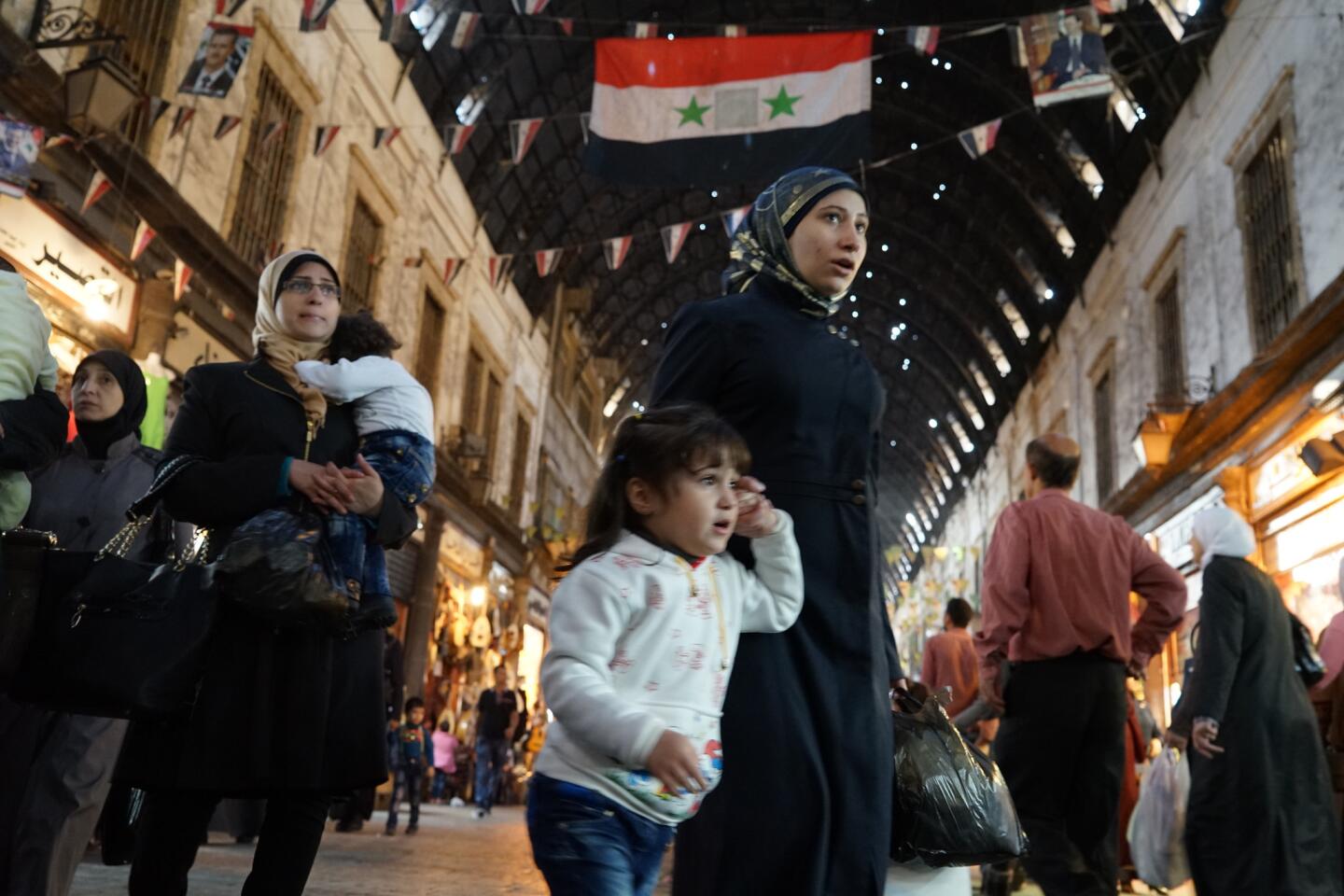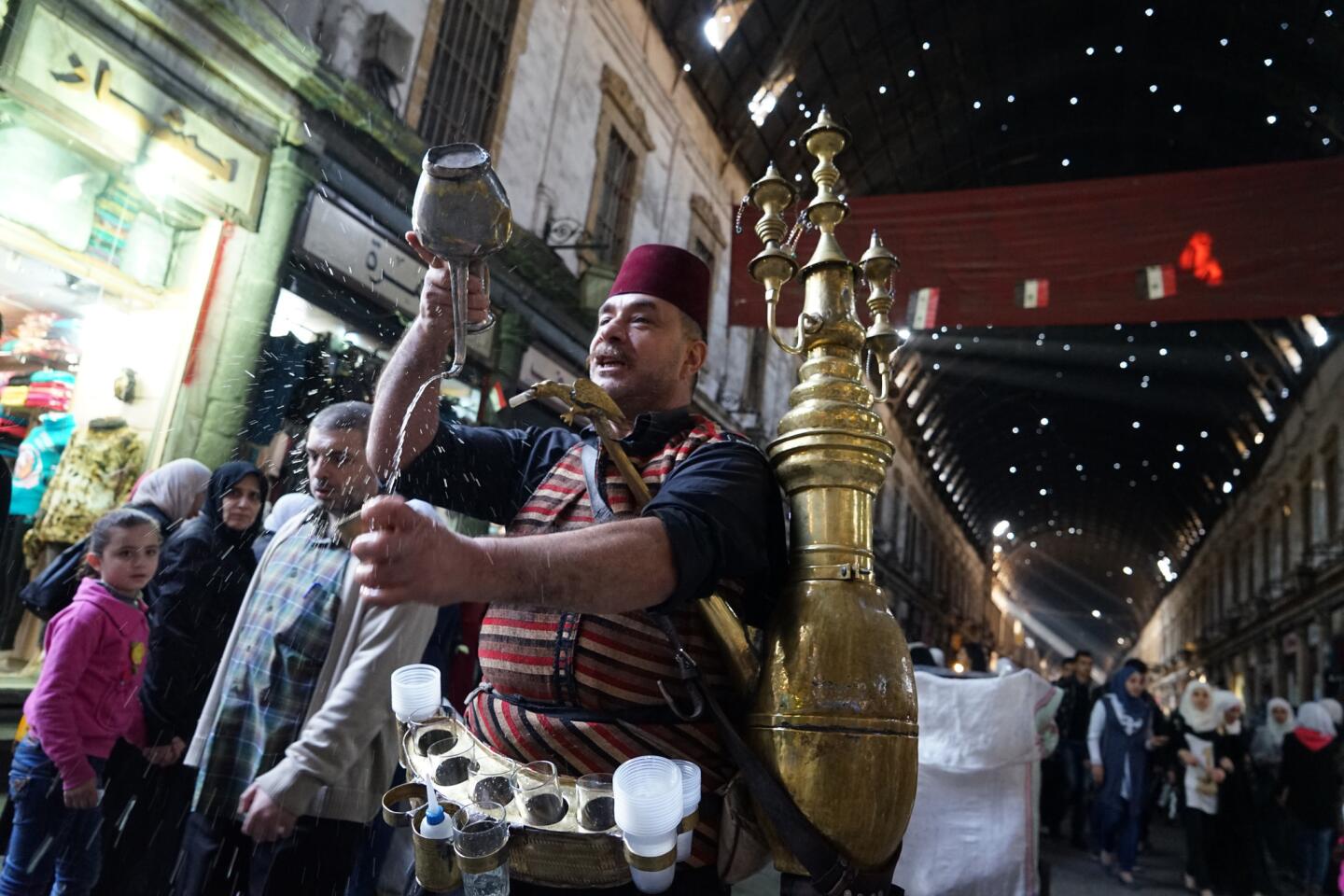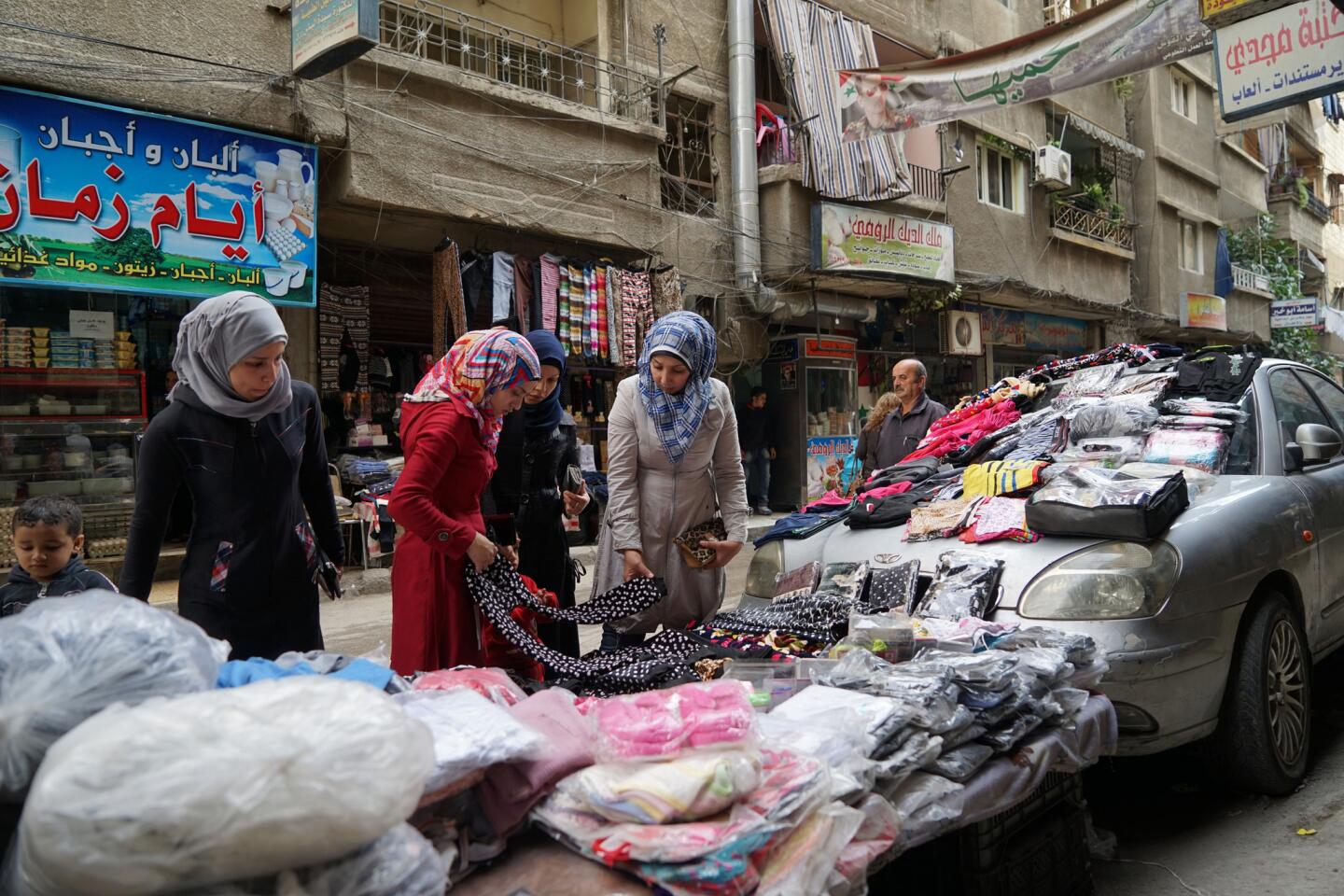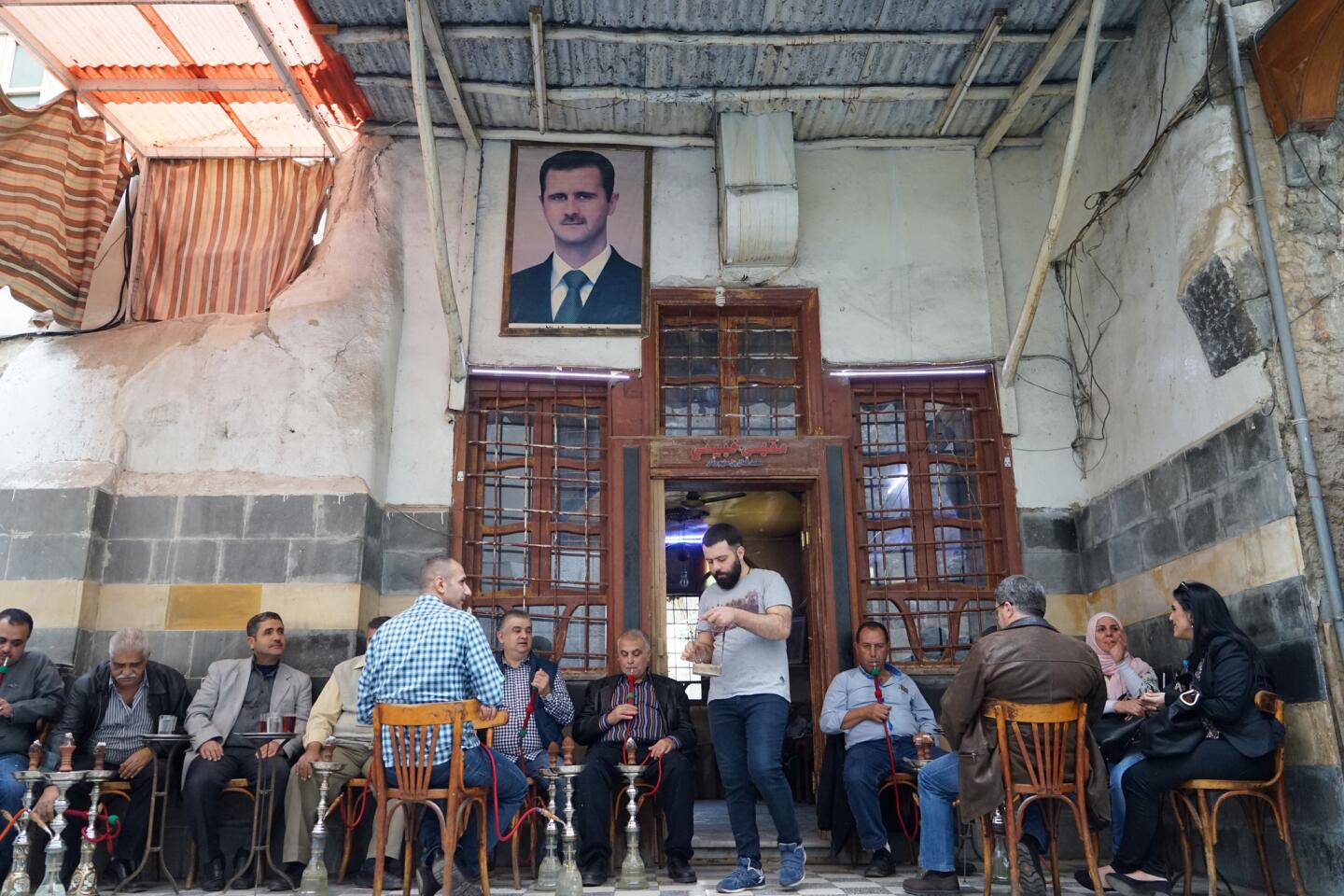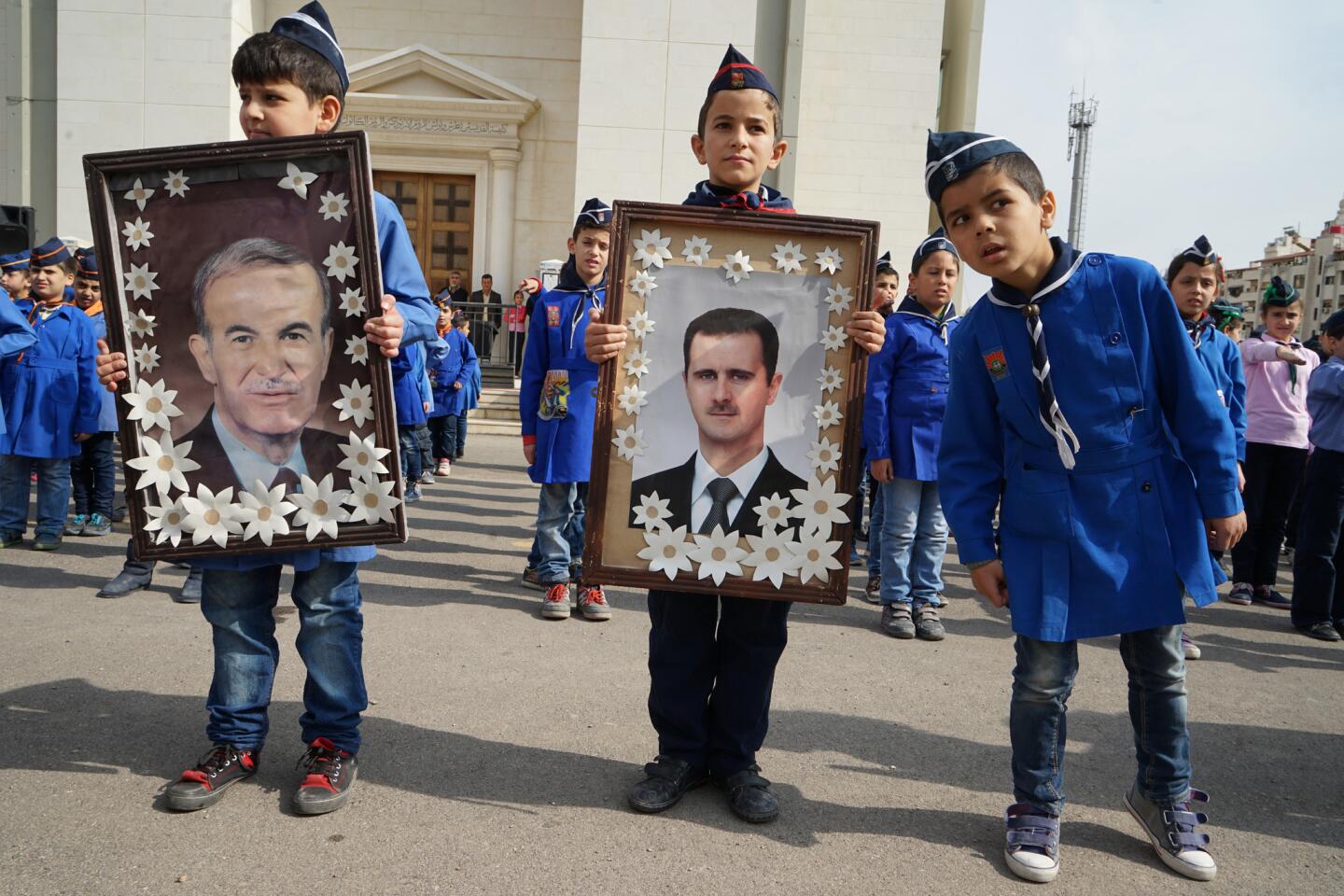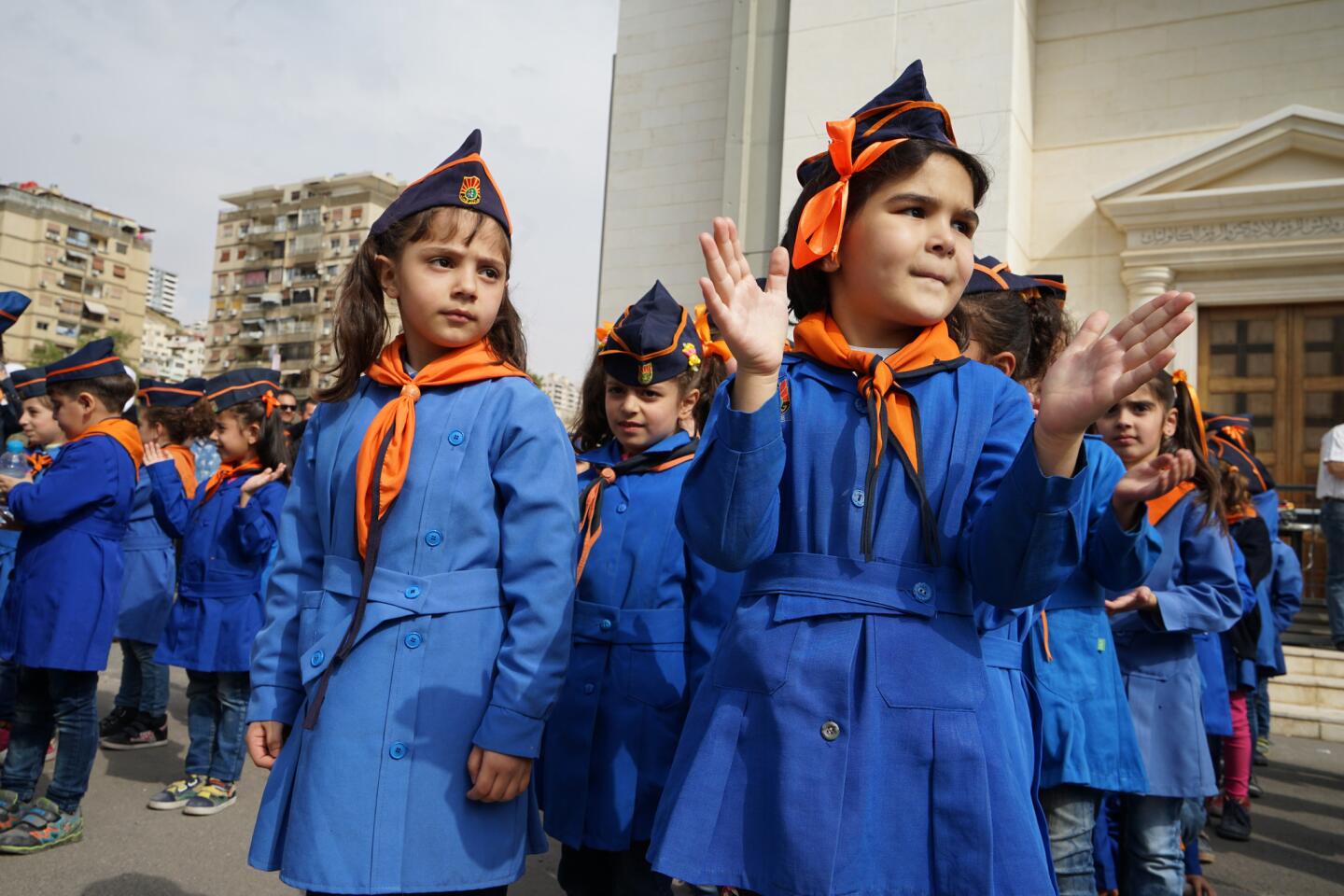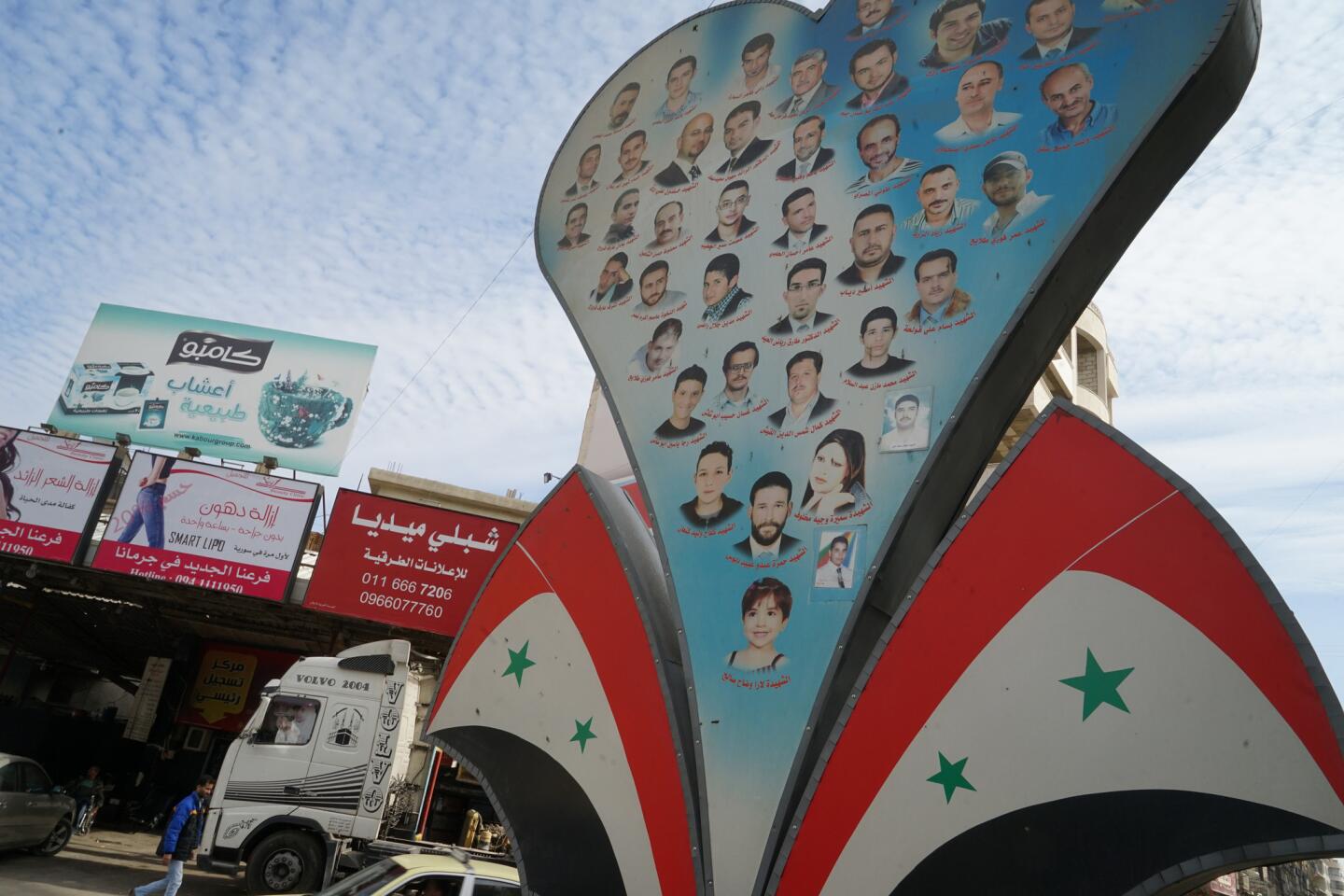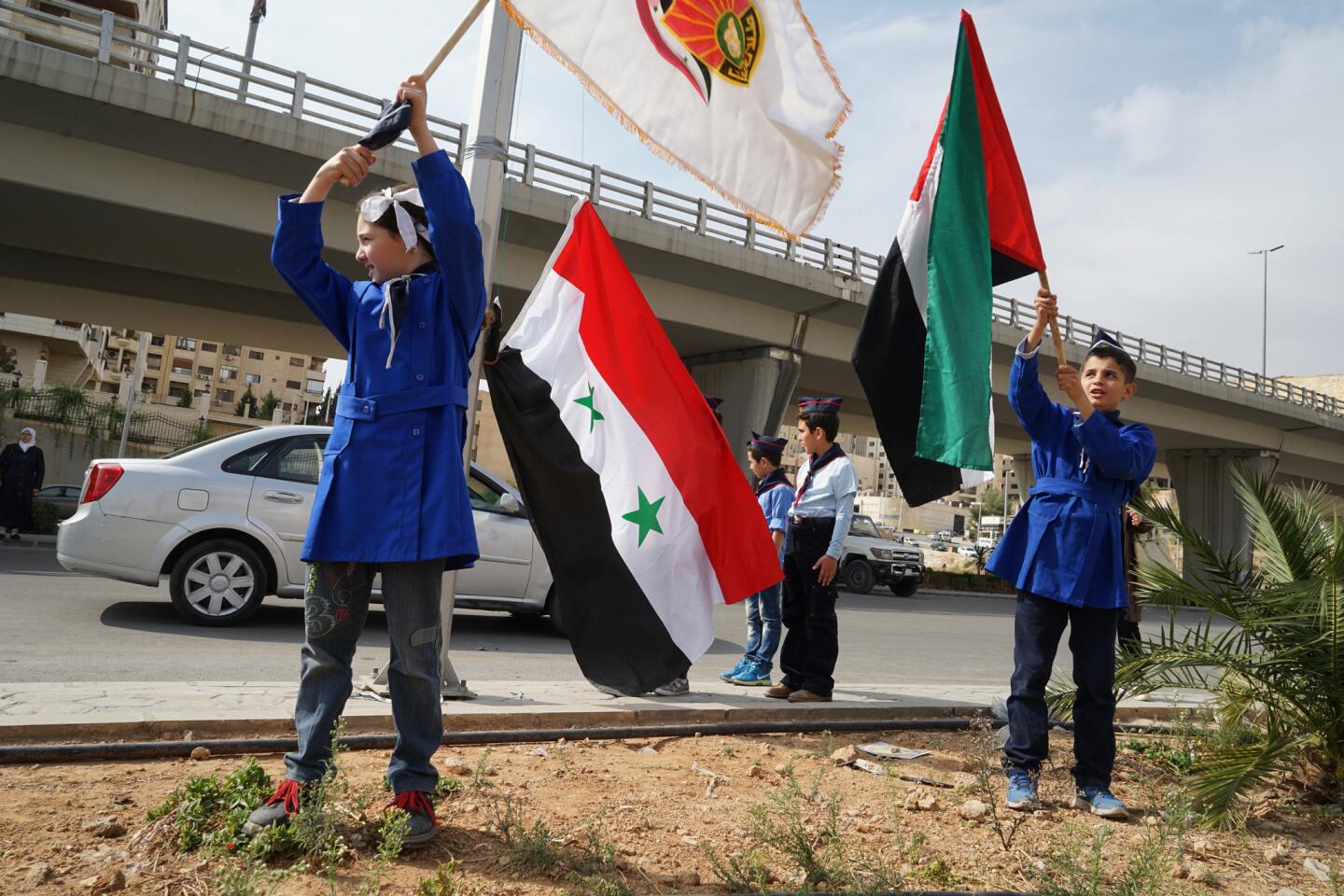In Damascus, Syrians express a surprising level of optimism
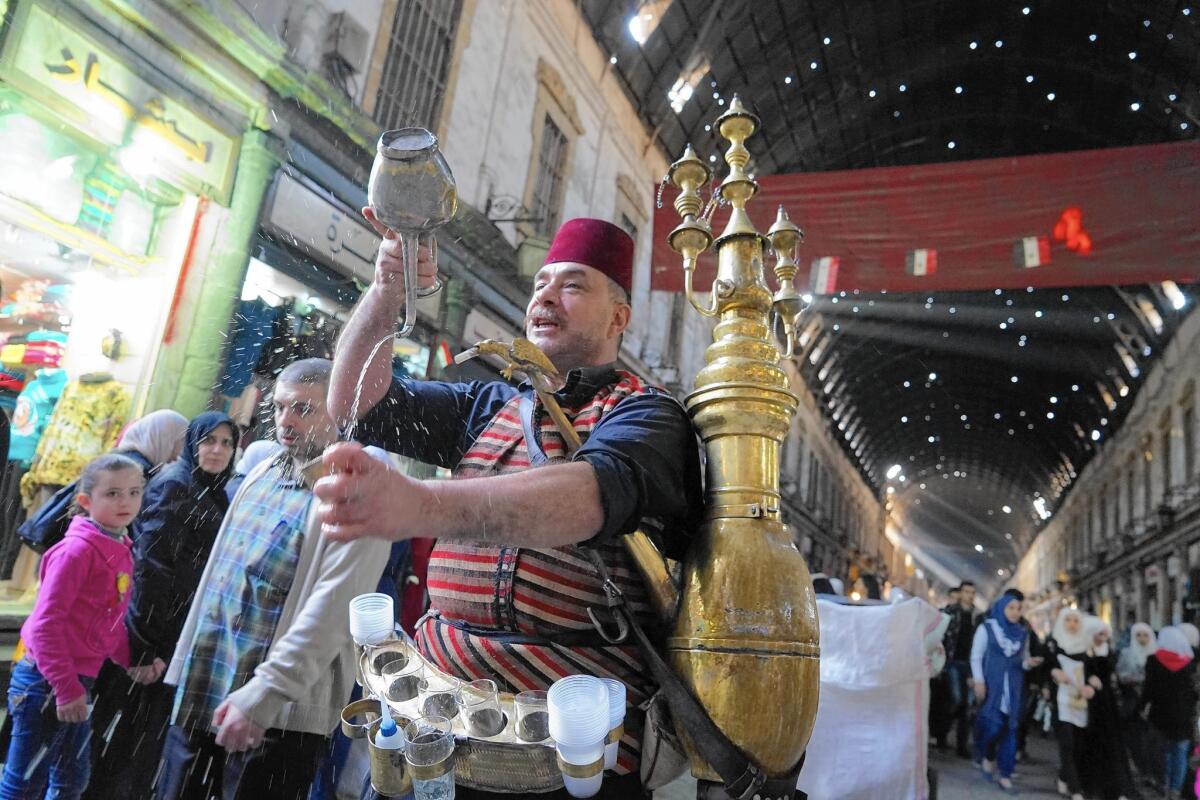
Reporting from DAMASCUS, Syria â Amid the din of Hamidiya market, Isahak Kraymeen took a break from slinging cups of tamarind juice from a magic lantern-style brass cooler to reflect on the future of his wounded homeland.
âI have hope now that a new sun will soon rise to cover all the destruction,â declared the juice man, decked out in a red fez and ballooned pants, a throwback to a time when tourists thronged the storied souk and posed for snapshots with the Ottoman-era-like figure.
Across Old Damascus, in the labyrinthine alleys of the Bab Touma district, Juman Edilbi said he sensed rising confidence among fellow residents of the Syrian capital.
NEWSLETTER: Get the dayâs top headlines from Times Editor Davan Maharaj >>
âEach day I get the feeling more and more that people think the worst is behind us,â said Edilbi, a bespectacled university student.
Shoppers thronged the famed covered market, stopping at stalls selling everything from womenâs clothing to copper ornaments to handmade Arabic-style ice cream.
From the outside, the news from civil-war stricken Syria appears devoid of hope, a dismal loop of executions, bombardments, bedraggled refugees on the move and hyped diplomatic initiatives that seem to go nowhere.
In Damascus, however, interviews with residents suggest a tentative sense of optimism, even as the war drags through its fifth year. Rising prices and power cuts remain the norm, rebels still hold sway in nearby suburbs and uncertainty about the future has become a fact of life.
Still, the mood seems cautiously upbeat in the capital, even compared with a visit just four months ago.
Russiaâs monthlong intervention on behalf of the government of President Bashar Assad has lifted the spirits of many government supporters in the area, Assadâs base of power and home to an estimated 5 million people. The capital remains under tight government control. Since the Russian aerial campaign began Sept. 30, loyalist forces have gone on the offensive outside Damascus and to the north, winning back territory.
Even many Syrians opposed to more than 40 years of Assad family rule view the current government as a bulwark against the Islamic militants who have come to dominate the armed opposition.
On Sunday, insurgents in Duma, a rebel stronghold northeast of Damascus, posted video of street scenes featuring caged hostages, identified as members of Assadâs Alawite sect. The rebels said the captives were being deployed on the streets as human shields against punishing government and Russian airstrikes that, the opposition said, had killed hundreds of civilians â an allegation denied by Moscow.
âIf you want to bomb us and we die, theyâll die like us,â says an apparent rebel fighter in the video, referring to the Alawite hostages.
Although opposition activists condemn Russiaâs intervention, pro-government residents are thrilled that a major power has publicly taken their side against a formidable array of adversaries, including the United States and its partners, who do not want Assad to remain in power. Syriaâs other major ally, Iran, has also stepped up military aid.
âThe Russians came to help us as a friend, and we appreciate it, but we must still depend on ourselves and our God â and we will fight to the end,â vowed one plainclothes security man in a black leather jacket Monday at a checkpoint. âIf need be I will fight with this alone,â he added, holding aloft his walkie-talkie, as uniformed troops with AK-47s nodded in agreement.
Last weekâs declarations at an international conference in Vienna backing the maintenance of Syriaâs state institutions and the countryâs âsecular characterâ also appear to have quelled anxieties. A persistent fear in the capital is that Syria will suffer the kind of catastrophic collapse into anarchy seen after the U.S.-backed toppling of authoritarian governments in Iraq and Libya. The Obama administration has said it does not want the Syrian state to fall apart.
âI think itâs great that Russia is helping us,â said Rascha, 28, a shopper in the Hamidiya souk who asked to be identified by first name only for security reasons. âReally, people are fed up. They want it to end.â
Nodding in agreement was her friend, 38, a mother of three who asked to be identified by a nickname, Um Aiman, or mother of Aiman. She said she and her family had recently fled the rebel-held Ghouta area east of the capital, a vast stretch that includes Duma city and is still reported to be home to more than 200,000, despite large-scale destruction.
âIt was just getting too hard to live in the Ghouta â food was so expensive, there were shortages, bombings, the armed groups controlled everything,â said Um Aiman, seated in a second floor-clothing store overlooking the bustle of shoppers below.
She said her son, Aiman, 17, had died because he could not get proper medical attention for an unspecified illness. âPeople in the Ghouta canât take it any more,â she said.
Any sense of relief in Syria does not extend to embattled places such as the northern city of Aleppo, where renewed fighting has left about 2 million civilians largely cut off from outside supplies. The war has left at least 200,000 people dead and pushed more than 4 million Syrians to leave the country.
In Damascus, however, mortar and rocket attacks have subsided. Once-frequent car bombs have all but ceased. Traffic jams and lively markets and streets attest to an atmosphere of normality, even amid the ever-present martial reminders: troops in the streets, rows of concrete blast barriers and the omnipresent checkpoints that clog traffic, but appear to have helped reduce attacks.
In Jaramana, a densely packed southern suburb firmly in government hands, tight security and government advances in neighboring districts have drastically cut down on opposition bombings and shelling strikes. Displaced people from other districts have swelled the population of Jaramana. A heart-shaped monument at a busy intersection features photos of some of the scores killed, including children, in a double car bombing almost three years ago.
âSome friends have come to help us, that is a good thing,â said Nader Saloum, a real estate salesman who said he lost two close friends in the bombing commemorated in the monument across the street from his office. âMaybe it will end soon.â
To the northwest, in Damascusâ upper-middle-class Dumar district, children from a ruling-party scout group were raising Syrian flags and singing patriotic slogans during a school gathering Monday. Two youths held flower-lined photos of Assad and his late father, Hafez Assad.
âThere is less fear now, people are coming out to more activities,â said Juliette Hasan, 37, the mother of two boys in the ceremony, watching along with other parents, many taking pictures with their cellphones. âWe stayed in Syria and Iâm happy we did. I think all of those who left will come to regret it.â
Special correspondent Nabih Bulos in Athens contributed to this report.
More to Read
Sign up for Essential California
The most important California stories and recommendations in your inbox every morning.
You may occasionally receive promotional content from the Los Angeles Times.
